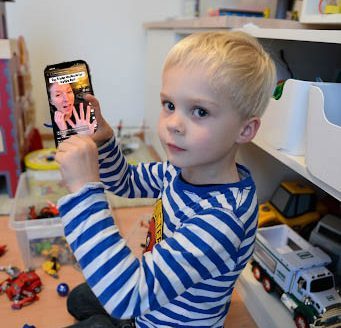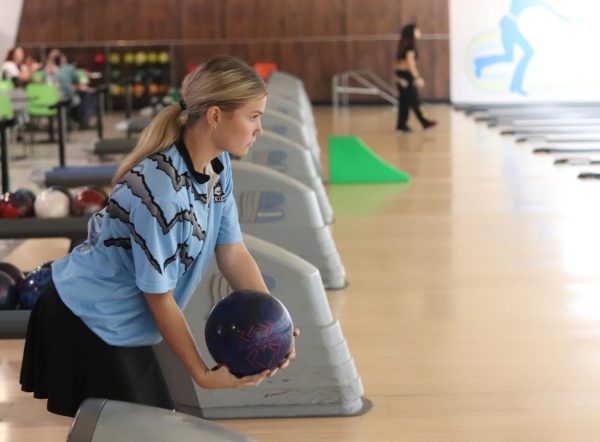Students run for physical and mental health benefits

photo by Bailey Fisher
Senior Nathalie Uldrych goes for a run to get in shape for lacrosse in the spring. Uldrych picked up running to prove to her coaches she was serious about the sport even though she had never tried it before.
Early in the morning, senior Juliana Garrett prepares for her morning workout. Across town, juniors Isaiah Diaz and Adriana Zumaeta wrap up their mile run. The night before, seniors Jordan Cox and Nathalie Uldrych ran in their own neighborhoods.
Students use running to get in shape, to stay in shape or even to help with their mental health.
Running is proven to help with stress relief, and, according to the Anxiety and Depression Association of America, 14 percent of people use regular exercise to cope with stress. Garrett adds running into her routine on nights she does not work to help her relax.
“Sometimes, right before I go to sleep at night, a thousand things pop into my mind, and it makes me super stressed, and I can’t sleep,” Garrett said. “If I go for a long run and get it all out my system, it can help me sleep and make me more relaxed.”
Garrett starts every day with a 7:30 a.m. walk and takes a half mile walk before she goes on her nightly runs. She began running in seventh grade when she participated in Run for God, a running club through her church for fun. Now, she has run several 5Ks in the past and is currently training for the Disney Princess Enchanted 10K in February, so she runs longer distances when she is competing.
Running does not have to be centered around races though. The exercise can be used to condition for a sport. Coaches encourage exercising outside of practice and during the season off in order to keep athletes in shape. Cox, a varsity basketball player, runs two miles every day to stay in shape for basketball.
“You can run harder some days if you’re motivated. Some days I’m feeling lazy, and I just have to tell myself I have to get up and run,” Cox said.
Cox has run since fifth grade and typically just does it in his neighborhood. Uldrych took it up recently to improve for lacrosse.
“My stick skills are not the best since I’ve never played it, so I figured I’d improve my running skills so the coaches see that I’m trying, and I really like it,” Uldrych said.
The girls’ lacrosse team is using an app called Endomondo in their preseason training this year to encourage players to condition on their own. The app tracks how much each player runs and posts who runs the most each week.
For those interested in taking up running, it is important to remember to warm up beforehand to avoid injury with stretches, like Uldrych, or a walk, like Garrett.
According to the American Academy of Family Physicians, approximately 70 percent of runners injure themselves each year, including Uldrych, who pulled her hamstring and had to take it easy for 10 days. Now she is slowly getting back into her routine and stretches more before she runs.
When Uldrych does run, however, she, like Garrett and Cox, needs music to focus.
“It doesn’t really matter what beat it is, but it has to match the rhythm of my steps. Otherwise, it doesn’t work and I have to stop to like change the song,” Uldrych said.
Zumaeta does not require music, only the company of a partner. Zumaeta, though not an athlete, set a goal for herself in June to get in shape. With the help of Diaz, Zumaeta has gotten closer and closer to meeting that goal.
“Find someone to push you because I don’t get motivated by myself. I have to have someone helping me out,” Zumaeta said.
Diaz and Zumaeta started a routine of working out together over the summer, but have had to find new ways, like morning running, to make time for working out since school started. The pair run two to three times a week. Zumaeta likes running because it is easier for her to access than other forms of exercise.
Running presents a simple way for students to get out and be active. There are running apps to track distance and time available for those starting to run.
“It’s something I can just go out and do. I don’t need a gym or anything to do it,” Zumaeta said.
 photo by Diego Sultan
photo by Diego Sultan
A list of the best running trails in the area with input from running “experts.” Click to enlarge.
Your donation will support the student journalists of Hagerty High School. We are an ad-free publication, and your contribution helps us publish six issues of the BluePrint and cover our annual website hosting costs. Thank you so much!











